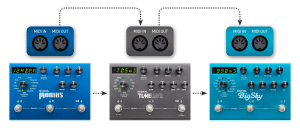
Gear Guide: Syncing Presets with MIDI
If you have two or more MIDI equipped Strymon pedals (such as TimeLine, BigSky, and Mobius), you can control them all at once by using the first
Free US Shipping On Orders Over $49
Easy 30-Day Returns
Financing Available Through ![]()
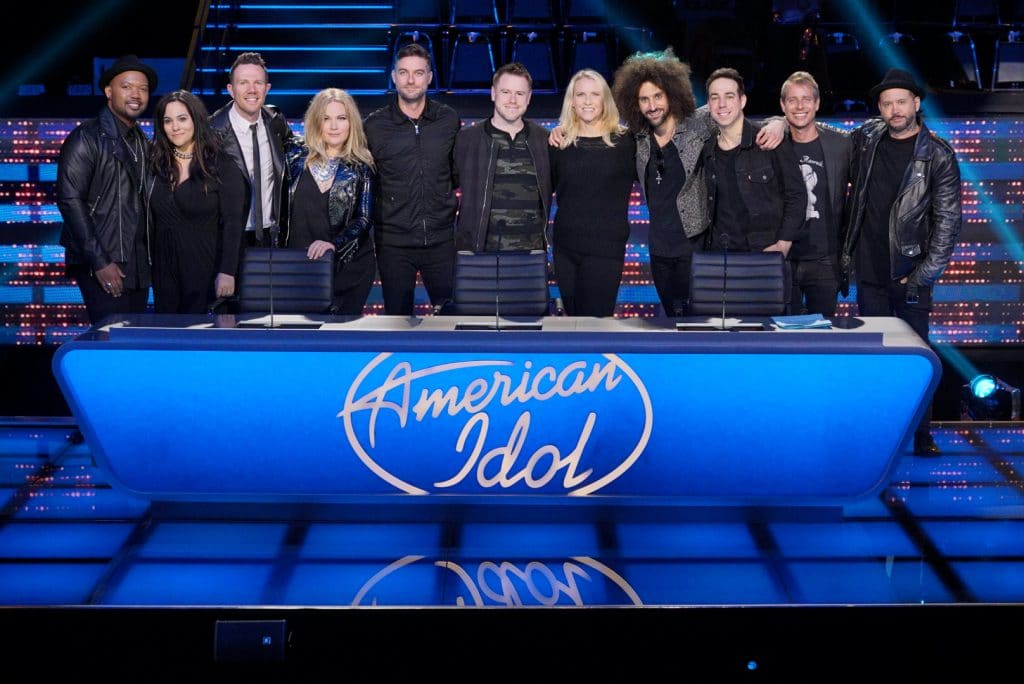
Recently we sat down with Greg Suran (guitar, American Idol house band, also lead guitarist with the B-52’s since 2012, and touring with Alanis Morisette this summer), and Peter Dyer (keys, American Idol house band and has toured or performed with Adam Lambert, St. Vincent, Mariah Carey, Aloe Blacc, and so many more) to talk about what is is like to work on American Idol.
But first let’s start off with a little Journey “Don’t Stop Believin” covered by American Idol contestant Gabby Barrett and the American Idol band.
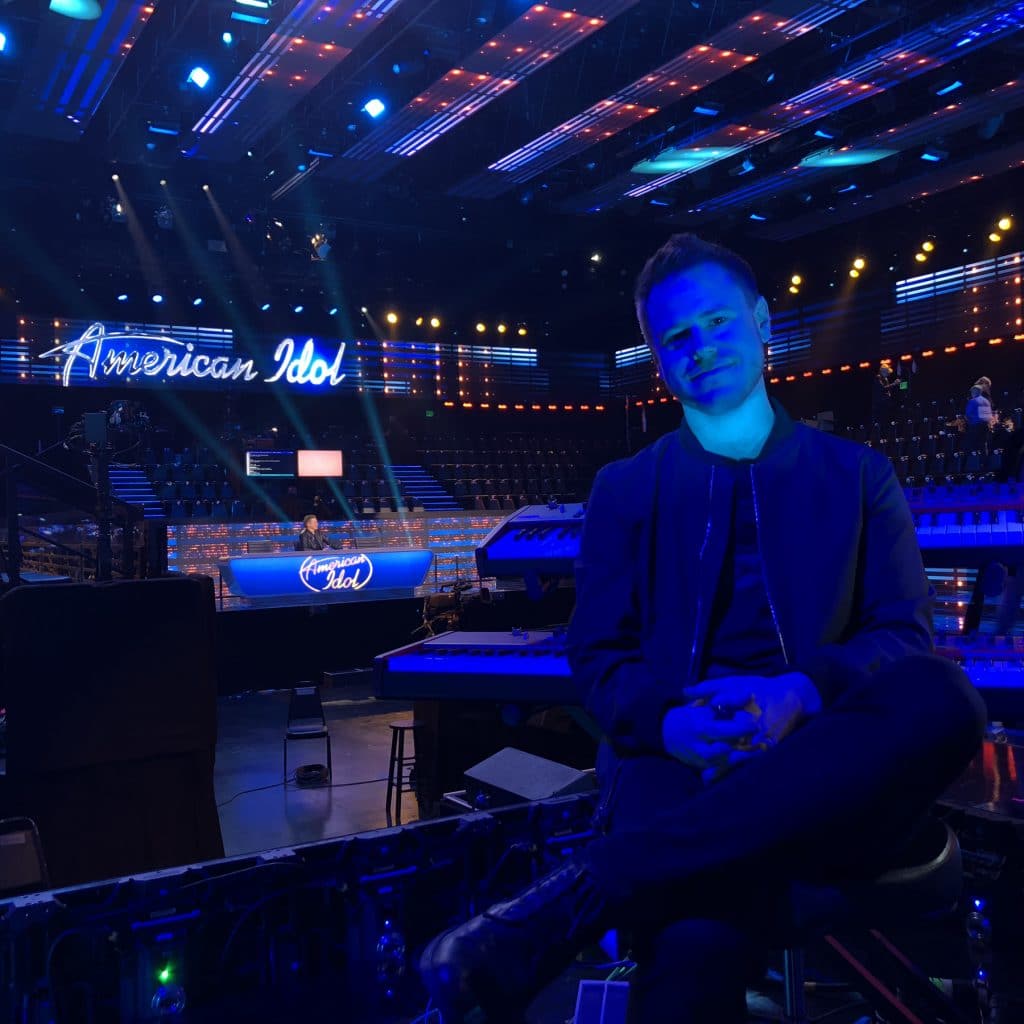
How did you both get your gig on American Idol?
P: We were brought on by Idol’s musical director Kris Pooley. I’ve worked for and with Kris quite a bit over the last few years: Adam Lambert, Niall Horan, Miguel, Katy Perry, Tegan & Sara, D.N.C.E., Lea Michele, and scoring several Chevy commercials, and a BMW short film, The Escape. He’s a fantastic leader, musician, and person, so I’m glad he had me on for this one.
G: Kris Pooley, the MD for Idol, is a friend of mine. Kris was the MD for the TV show Glee, and for a live tour featuring the actors/singers. He got me on that gig and we did a few tours together. That tour was also cover songs so I guess we have a pretty rich history of only playing cover songs together, lol.
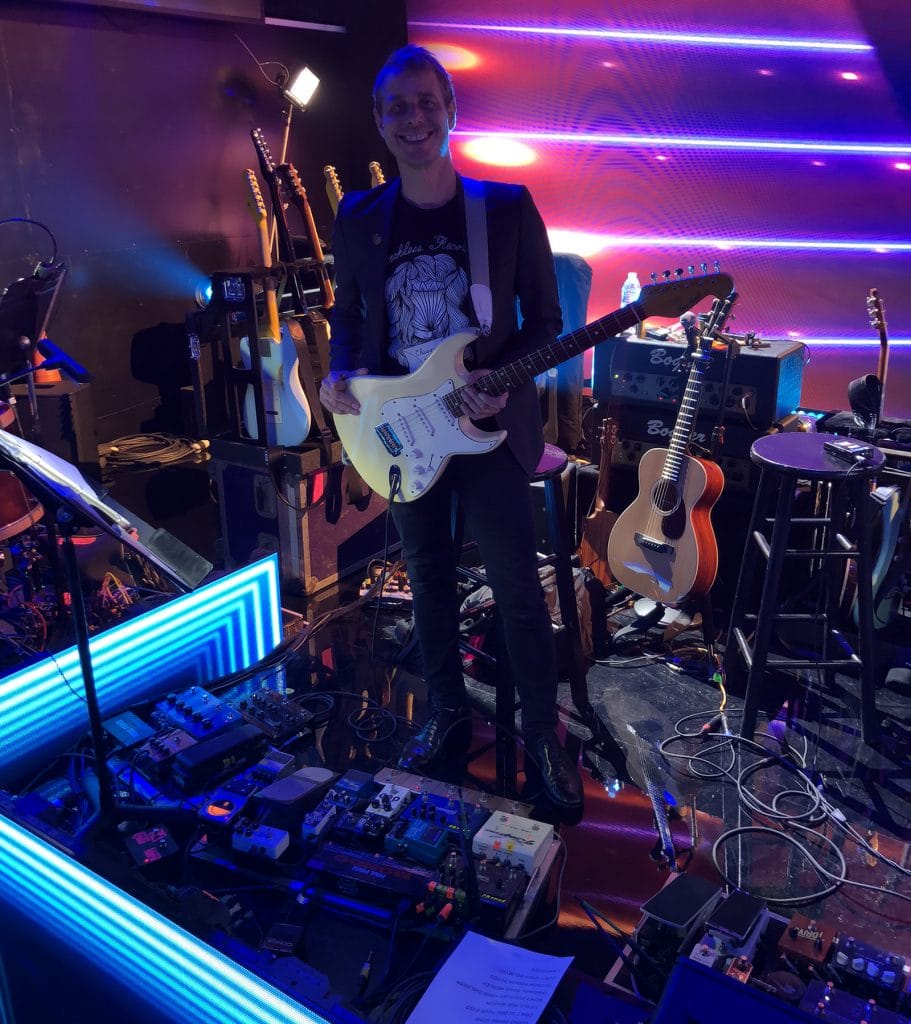
Is it different playing live on tour versus playing on television? And if so, how is it different?
Yes and no.
P: The entire band has played TV before many times for various artists, but they’re usually one to two songs for an album’s promotional tour on one of the morning or late-night TV shows. Or, working with a single artist on a tour you play ten to twenty songs that are in a similar vein since it’s one artist, and then you play those all tour with maybe some mild changes. Idol is so varied, with the different contestants, genres, and set productions so each week was a new hurdle. Also, the arrangements are short (one and a half to two minutes max), so you don’t have time to settle into a song. You have to hit that thing right out the gate, in front of the 5–10+ million viewers. Each episode was such a unique and varied set of challenges, and you never have time to get comfy, since it’s over in a flash and on to the next setlist. I found that energy and demanding precision very refreshing.
G: I’ve been touring pretty heavily since ’95 at all different levels, from the big stuff to the excruciatingly small and squalid. Touring at any level is usually the same, in that you spend some time rehearsing a specific set and then play that same set of songs for months. The hard part becomes the travel, and the musical challenge can be keeping the music fresh, challenging yourself to be creative, and always bringing enthusiasm to songs you may have been playing for years. In other words, you get into a routine on tour. Idol is a completely different animal. For Idol we had a list of 50 songs to learn for the first week. (P: Our total song count for the season was 225!) We primarily read charts, as it would be pretty tough to memorize that many songs a week. I feel it’s really important to get all of the nuances in tone, phrasing, style, etc., of a song as opposed to just cold sight-reading it. We’re trying to play this music authentically, so it requires a lot of homework before we even begin rehearsing for an episode. Then, we wait for the charts to arrive and see what actual key we are playing the song in. On guitar this can really change the approach. For example, “Rhiannon” by Fleetwood Mac is totally different in Gb minor instead of the original A minor. I would have to change my approach entirely in a case like that. The hours can be very long in rehearsal. Also, we play many styles of music each week (Rock, R&B, Pop, Country, Jazz, showtunes, Folk, Soul, Reggae, etc.). So you have to be versatile and quick at both the music and finding the right tone/sound. I enjoy the challenge and it’s very rewarding being constantly engaged and invested. It’s a great way to grow as a player and see what you’re made of, so to speak.
—
This seems like a nice place to enjoy another clip from American Idol. Here is Michael J. Woodard covering “I Would Die 4 U” with the American Idol band.
How did you and Greg use Strymon pedals in your performances?
P: I have a TimeLine and a BigSky on my Prophet 12 (later a Prophet X). The show is fast-paced, and we have to cover a lot of ground. There’s no time for futzing with knobs, so I’m very keen on preset management on my boards and pedals. I’d save a preset for each song on my boards, so I can see the name, and recall the tone with no doubt.
G: For my Idol pedalboard I use the TimeLine delay and Mobius modulation modeler. Because of the extremely diverse types of music we play I need to be able to access and reproduce sounds and effects authentically and quickly. For the TimeLine it’s a huge advantage to have all of the presets available to assign to any number of the 50 or so songs we play every week. In an episode I often need to go from a slapback delay for country chicken pickin’ and the next song I need a long delay with modulation for Eno-esque ambient volume swells. The TimeLine’s extremely high quality sound and its programmability make it invaluable on this gig. The Mobius is probably the one pedal I could not do this gig without, for the same reasons as the TimeLine. It’s common to need a rotary effect, ’80s chorus, ’70s phaser, ’50s tremolo, heavy flanger (e.g., Heart’s “Barracuda!”), and pitch vibrato all in one episode. I rely on the Mobius for all of those effects. Frankly, I think they sound as good or better than the large, analog original pedals. The programmability is key.
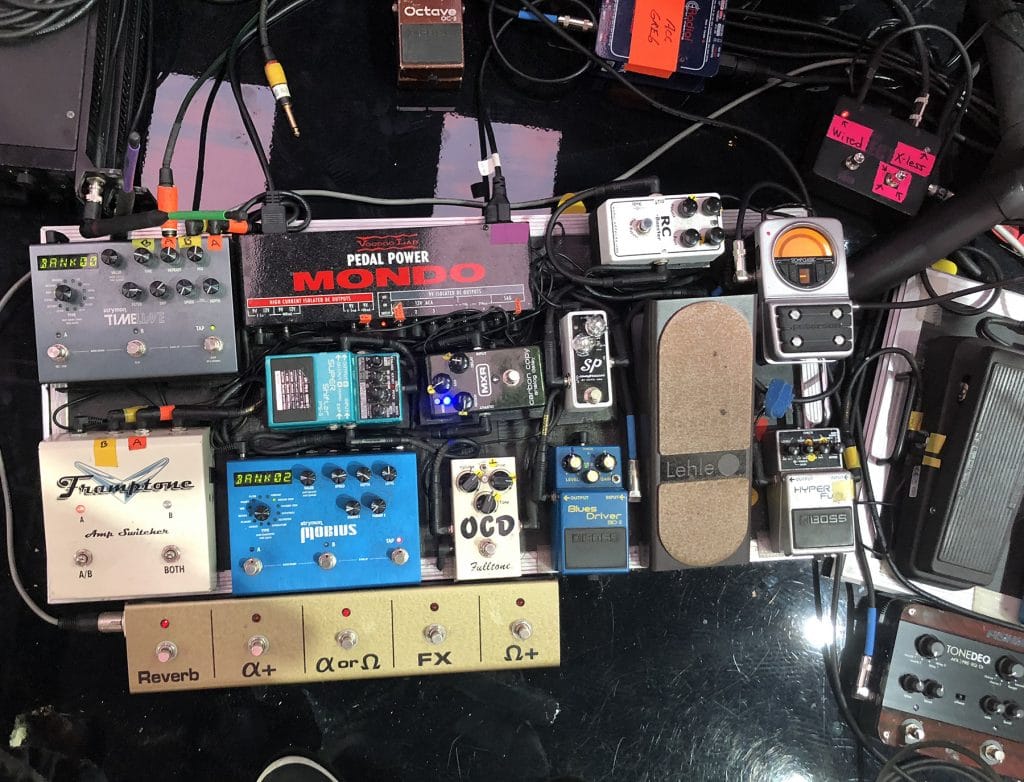
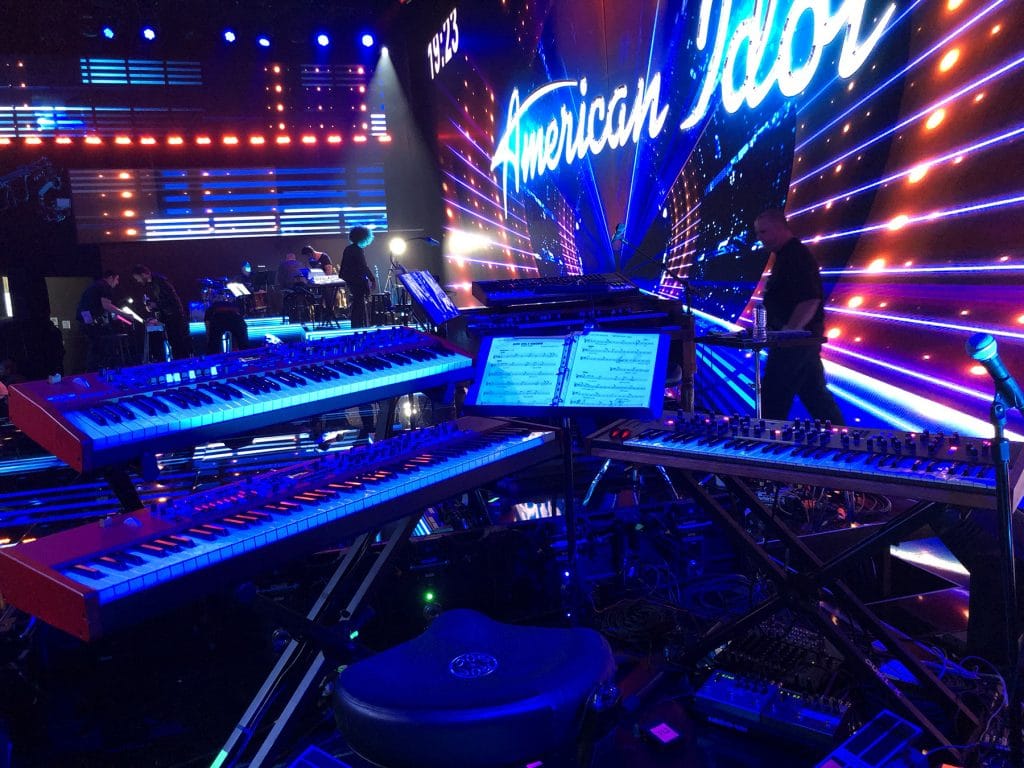
How does the pressure of this being a competition for the singers change the way you perform?
P: I tried to be very precise in my choices, because if I didn’t play something clearly and confidently, then the contestant could be affected, and that in turn could blow their performance. The contestants have only heard the band play the song a handful of times (and we’ve only played it a handful of times together as a band), so there’s no room for irregularity or doubt.
G: I think the unpredictability of the contestants and how they perform can be a challenge. You don’t know their instincts, or phrasing or tendencies so you always have to be on your toes. And you want to be at your best and make them feel inspired to sing their best.
What tip do you have for someone wanting to pursue a career playing on a show like American Idol? And what do you think is the best asset to have as a performer for a show like this?
P: With a show like this, the MD needs to know you are dependable, can nail sounds of the record, execute them precisely and consistently, and make good musical choices when audibles are called. There isn’t time for everyone to be told exactly what to play – the pace is too fast. There are countless departments moving to execute a live show, and the band is just one piece. Apart from being in the right place at the right time with the right musical skills – trust and dependability, consistency, precision, and being easy to work with. I’m but a cog in the wheel of this massive live show’s machine, and need to show up and do my part without issue. Working in pop-world over the last several years with lots of artists in lots of situations with various problems to solves (big gigs, small gigs, crappy gigs, festivals, recording sessions, writing sessions, production at home, etc.), has equipped me for this kind of work, and I loved doing the season.
G: Skill set-wise, one needs to be a good sight reader and play pretty much every style with a good level of competency if not mastery of all. I think that can take a lifetime of always trying to play in any kind of band or musical situation that you can. Don’t be closed-minded or afraid of new musical styles and experiences. Jump in and try to learn on the fly, even if deep down you may fear you don’t have your chops together on a certain kind of music. Sometimes you get your butt kicked and have to go back to the woodshed, but that’s the process that helps you grow. That, and make sure you have a capo! 😉
—
Thanks to Greg and Peter for taking the time out to share all this great info. Here is one more clip from American Idol with contestant Caleb Lee Hutchinson covering “Folsom Prison Blues” with the American Idol band.
————————
Peter’s current projects:
Sound design for the DSI Prophet X
“All Sounds Subsequent 37” demo for Moog Music
Rafferty’ s “White Flower” (writer & producer)
Check out Greg’s solo music at:
https://gregsuran.bandcamp.com
Check out more of Peter’s projects at:
https://peterdyer.net
Keep up with Greg and Peter:
https://www.instagram.com/gsuranwrap/
Subscribe to our newsletter to be the first to hear about new Strymon products, artist features, and behind the scenes content!

If you have two or more MIDI equipped Strymon pedals (such as TimeLine, BigSky, and Mobius), you can control them all at once by using the first
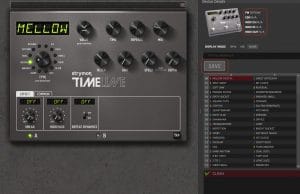
We are pleased to present a public beta of Nixie, the graphical backup librarian, organizer, and creative preset editor for TimeLine, BigSky, and Mobius. Use it for instant, easy
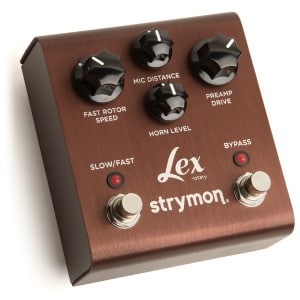
We recently met up with Peter Dyer (keyboardist for Mariah Carey, Aloe Blacc, Van Hunt) and he graciously put together a few audio examples featuring